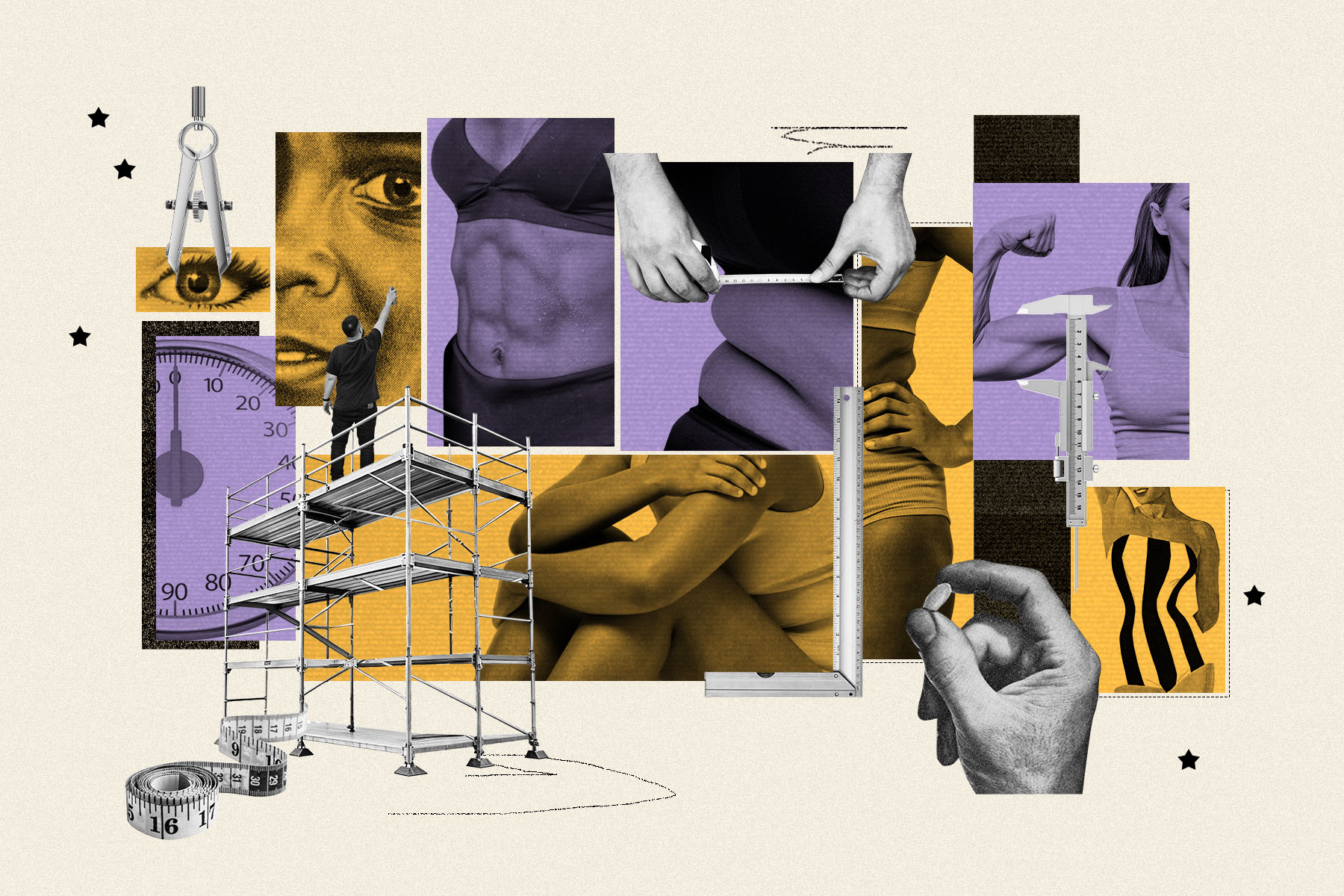This article published in partnership with Them.
Member support made it possible for us to write this series. Donate to our nonprofit newsroom today to support independent journalism that represents you.
Imane Khelif, a long-time competitor in women’s boxing, had come to Paris to represent Algeria at the Olympics for the second time. Algerians traveled hundreds of miles to support her. Algerian newspapers heralded her as a “heroine.” She beat one opponent after the next, winning gold in the women’s welterweight tournament.
But since the first time she entered the ring in Paris, Khelif’s body, mannerisms, identity and athleticism became the focus of scrutiny by politicians, billionaires and news outlets on a global scale. A narrative soon took hold: Khelif was labeled a transgender woman.
This wasn’t true — but that didn’t matter. Her actions and reactions were weaponized against her. Khelif had won her matches too easily. When her first opponent quit after 46 seconds and cried after Khelif punched her, Khelif didn’t look remorseful enough. To detractors, this boxer from Algeria, who had pursued a sport she loved since she was 6 years old, didn’t fit the stereotypical idea of what a woman is supposed to be.
The anti-transgender hatred directed at Khelif — and the narrow beliefs about femininity being projected onto her — are part of how anti-trans rhetoric fuels violence towards women of color, including cisgender women, experts and transgender athletes told The 19th.
“Really what we’re talking about is the spectacle of surveillance on women of color’s bodies, especially when they’re winning and performing in ways that exceed the expectations of White women,” said Treva B. Lindsey, a professor of women’s, gender and sexuality studies at Ohio State University.
Gender policing, or enforcing traditional gender norms and roles through the punishment of those who don’t conform, ignores cultural variations, spectrums of self-expression, gender fluidity and nonbinary identities, said Toni Newman, director of the coalition for justice and equality across movements at the National Minority AIDS Council. And these variations are not exclusive to transgender people. Now, attacks levied against transgender women are being used to attack cisgender women, she said.
“You’re policing now not only transgender people who transition, but you’re policing straight people,” Newman said. “So now we’re going to start policing masculine women and now we’re going to police feminine men? I mean, where are we going with this?”
For years, Republican state legislators and conservative media have accused transgender girls in schools of endangering cisgender girls’ safety and taking away their athletic opportunities when they play women’s sports. Despite lawmakers’ inability to provide evidence to back up these claims, 25 states now ban trans students from playing in sports consistent with their gender identity. This legislation has also affected cisgender students, fueling speculation about whether women and girls playing sports look feminine enough.
In February, a Utah State Board of Education member falsely claimed that a local girl playing for her high school’s basketball team was transgender. The teenager quickly faced a flood of threats and harassment. The school board member, Natalie Cline — who was censured by the state legislature — apologized, saying that the current political environment and “push to normalize transgenderism” had led her to publicly speculate about the student’s gender identity based on her physical appearance.
“Nobody wants to question if a kid is the gender they say they are. We want to protect children, not hurt them,” Cline wrote on Facebook.
At the Olympics, Khelif would face the same scrutiny on a much larger scale.
Former President Donald Trump, Italian Prime Minister Giorgia Meloni, billionaire Elon Musk and author J.K. Rowling all fueled the attacks against Khelif by speculating about her identity and using the moment to amplify transphobic ideas around keeping men out of women’s sports. The International Olympic Committee (IOC) urged for rationality. But that didn’t stop the speculation or insults.
Khelif’s next opponent, Hungary’s Anna Luca Hamori, shared a meme on her Instagram account of a slender woman in a boxing ring staring down a large male figure with demonic horns ahead of their bout. Khelif defeated Hamori in the quarterfinals. After the fight, the athletes shook hands. Hamori walked away without answering reporters’ questions about her Instagram post.
Anti-trans rhetoric demands adherence to a strict gender binary and anyone whose looks and behavior place them outside that rigid binary becomes a threat to the ideals of patriarchy and white supremacy, Lindsey said. Ultimately, women of color are the ones most at risk of being targeted for not adhering to fragile notions of gender and unrealistic expectations of femininity, she said. And when these non-conforming women win, that triggers intense backlash.
To Angel Joy Flores, a transfemme personal trainer and content creator living in Seattle, gender policing would persist even if trans women weren’t brought into the conversation. The issue, she said, is that trans women are an easy scapegoat to amplify an effort to police all women’s bodies. And as anti-trans rhetoric surges and emboldens misogyny, that effort has the potential to move beyond sports.
“How long until we start to see right-wing politicians become emboldened to start questioning their opponents’ sex and gender?” Flores said in a text message. “How long until that spreads to schools, requiring girls to prove their girlhood to be allowed into bathrooms and certain classrooms?”
-
Read Next:
To counter the global vitriol, Khelif’s father felt compelled to show news outlets her birth certificate, where Khelif is listed as female in a country that does not allow trans people to update their personal documents. The IOC, for its part, has been adamant: Khelif is a target of misinformation and politically motivated hate speech.
Khelif has filed a criminal complaint in France against X, citing Rowling and Musk’s actions as part of widespread cyber-harassment.
Speculation about her identity has largely been based on her sudden disqualification from the 2023 IBA Women’s World Boxing Championships. The organization, which was banished from the Olympics last year, claims that she failed unspecified gender eligibility tests. What is known about those tests is that they did not include a testosterone examination, according to the IBA. Khelif — along with Lin Yu-ting, a featherweight boxer from Taiwan, who has also been falsely accused of being transgender — were instead subjected to multiple blood tests.
The IBA has not disclosed details about these tests, citing private medical information.
“This woman has competed for a very, very long time in women’s sport against many opponents,” Mark Adams, a spokesperson for the International Olympic Committee (IOC), told reporters at another press conference. “I think if you start working on all suspicions, then we end up very much heading towards a gender testing regime, which is not good for anybody.”
A 2020 report by Human Rights Watch, detailing nearly 80 years of sex determination testing in sports, found that such tests enforced by other athletics governing bodies have been used to police women of color across the globe. Frequently, those women have what medical professionals call intersex traits — relatively common sex characteristics that fall outside the binary definitions of male or female. Many people live their lives with no awareness of these traits.
Caster Semenya, the South African middle-distance runner and two-time Olympic champion, was subjected to medical tests at 18 years old by athletic authorities because of the way she looked. Semenya, a woman, was born with high levels of testosterone and XY chromosomes. Running helped her financially support her family. Still, she was told that she would have to undergo surgery or take testosterone-lowering drugs.
Semenya chose to take the medication, but it made her sick. Yet to keep on competing as a runner, she had to take it for more than six years.
“I know that some other athletes with conditions similar to mine have been offered this solution. Many are women of color and are from impoverished backgrounds. They see running as their only hope of making a life for themselves and their families. They are intimidated by a system they cannot understand, and they don’t have resources to fight for themselves,” Semenya wrote in a 2023 New York Times essay.
The people being tested and interrogated over their gender through sex eligibility testing are overwhelmingly women of color, Lindsey said. Black women in the United States and women of color from the global South are particularly targeted — and, advocates say, that obsession with narrowly defining womanhood is fueled by anti-transgender animus.
For Nick Pham, a trail runner in Portland, seeing the world turn against Khelif was scary to watch as a nonbinary person. Speculations around Khelif’s identity seemed intent on drawing a clear line in the sand between what makes a man and what makes a woman, reinforcing a gender binary that refuses to acknowledge Pham’s existence.
“This is the kind of thing that makes people afraid to be themselves,” they said.
When responding to the global outcry against her, Khelif indicated that the hostility she has faced is hostility to women everywhere.
“Yes, this issue involves the dignity and honor of every woman and female,” she told an Algerian broadcaster after beating Hamori, according to the Associated Press. “The Arab population has known me for years and has seen me box in the IBA that wronged me (and) treated me unfairly, but I have God on my side.”
The worldwide pressure had greatly affected her. In separate remarks, she said she had been subjected to the kind of treatment that “harms human dignity” and called for a stop to bullying athletes, saying: “It can destroy people, it can kill people’s thoughts, spirit and mind. It can divide people.”
In the ring, after her win against Hamori, Khelif was the one in tears — smiling, in victory and in joy.







